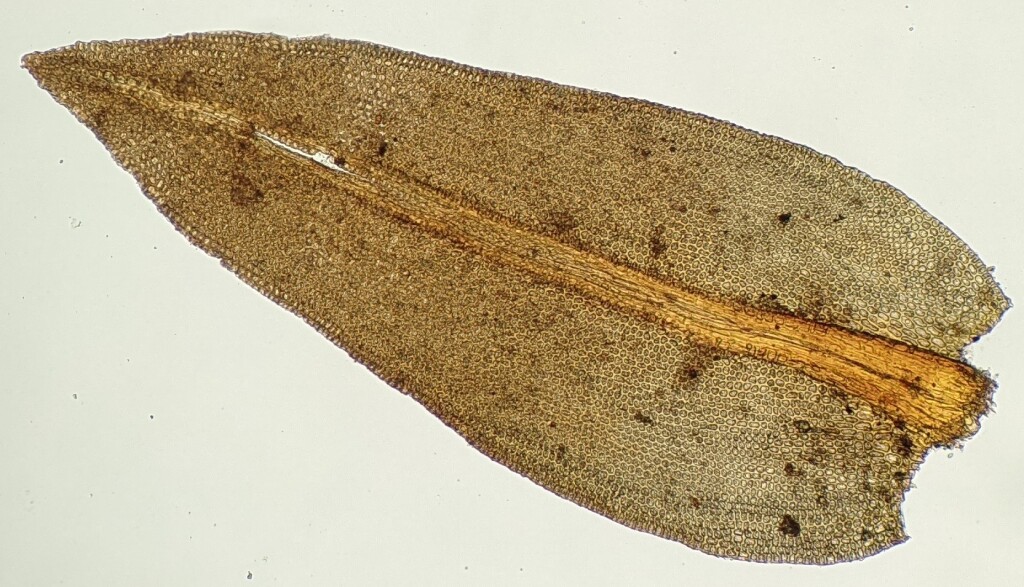Orthotrichum cupulatum
Hoffm. ex Brid.Asexual propagules absent. Tufts on calcareous rocks, blue-green to olive-green, 12–20 mm tall. Stems red-brown with frequent red rhizoids. Leaves erect-spreading when moist, erect appressed when dry, lanceolate to ovate-lanceolate, 1–3.2 mm long, 0.3–0.8 mm wide; apex acute; base decurrent; costa strong, ending below apex; margin entire, recurved, without a border; laminal cells in apical half mostly rounded-polygonal, isodiametric, 5–15 μm long, 5–17 μm wide, each with 2–3 unbranched papillae, gradually transitioning into basal cells; basal laminal cells rectangular or quadrate, 7–64 μm long, 7–17 μm wide, smooth. Seta to 1.5 mm long, yellow, smooth, not clearly twisted. Calyptra plicate, hairy. Capsules immersed to emergent, ovoid-urceolate, 1.2–1.6 mm long, yellow or yellowish brown, ribbed when dry. Peristome usually single; exostome teeth 16, erect to spreading; endostome usually absent. Operculum rostrate from hemispheric base, c. 0.4 mm long.
EGU, VAlp. New Zealand. Known in Victoria from limestone rocks beside Limestone Creek and the Buchan River in east of the state.
Lewinsky (1984) recognised two varieties of Orthotrichum cupulatum. Orthotrichum cupulatum var. austro-cupulatum (Dixon & Sainsbury) Lewinsky is endemic to New Zealand and includes plants with more cylindric capsules exserted on a bent seta, with a well-developed endostome. However, the distinctions between the two varieties in New Zealand are often obscured by intermediates (Fife 2017) and so varieties have not been recognised here.
 Spinning
SpinningFife, A.J. (2017). Orthotrichaceae, in Breitwieser, I. & Wilton, A.D. (eds), Flora of New Zealand – Mosses. Fascicle 31. Manaaki Whenua Press, Lincoln.
Lewinsky-Haapasaari, J.; Ramsay, H.P. (2006). Orthotrichum. Flora of Australia 51: 218–224.
Lewinsky, J. (1984). The genus Orthotrichum Hedw. (Musci) in Australasia: a taxonomic revision. Journal of the Hattori Botanical Laboratory 56: 369–460.


